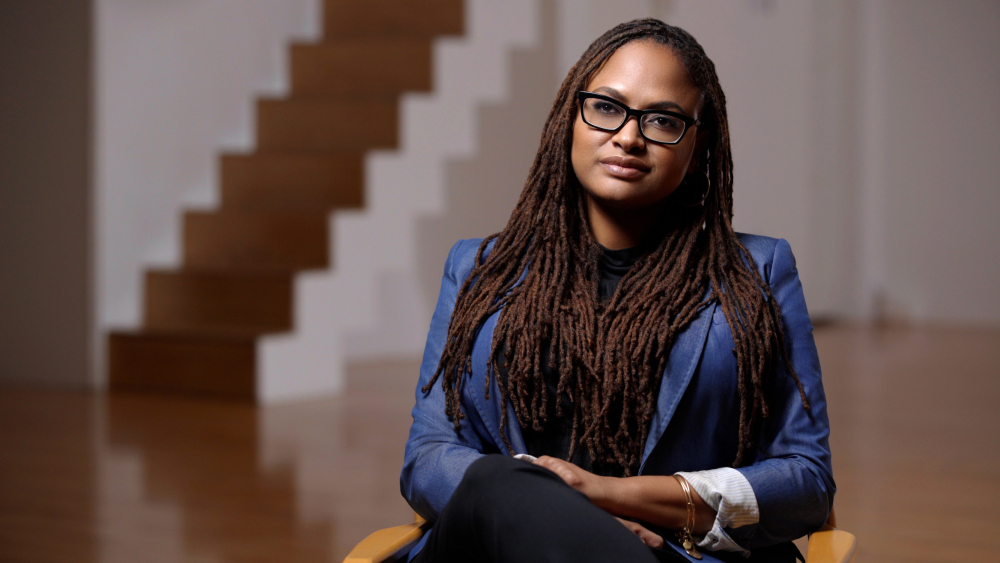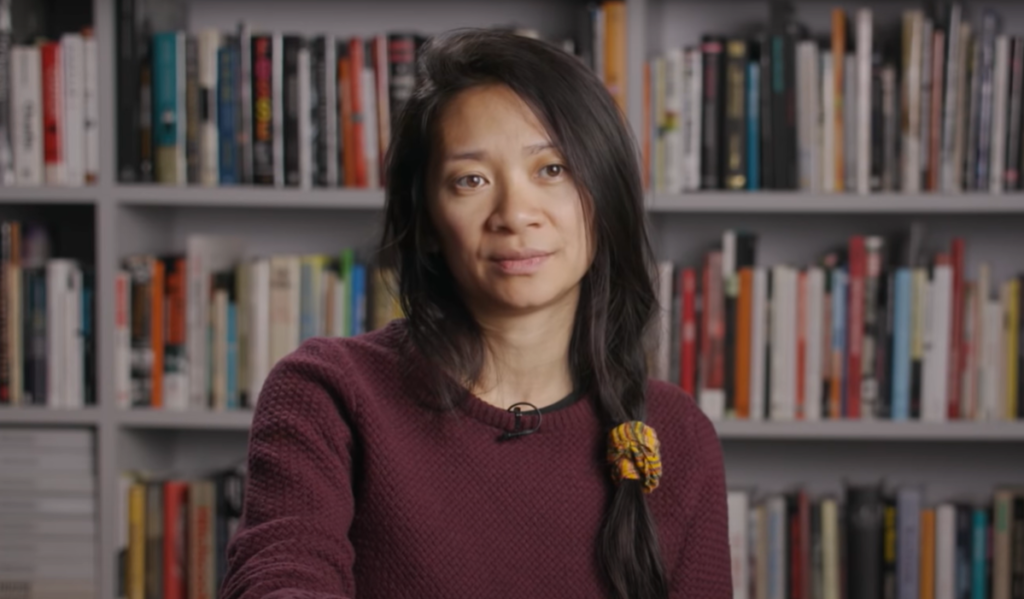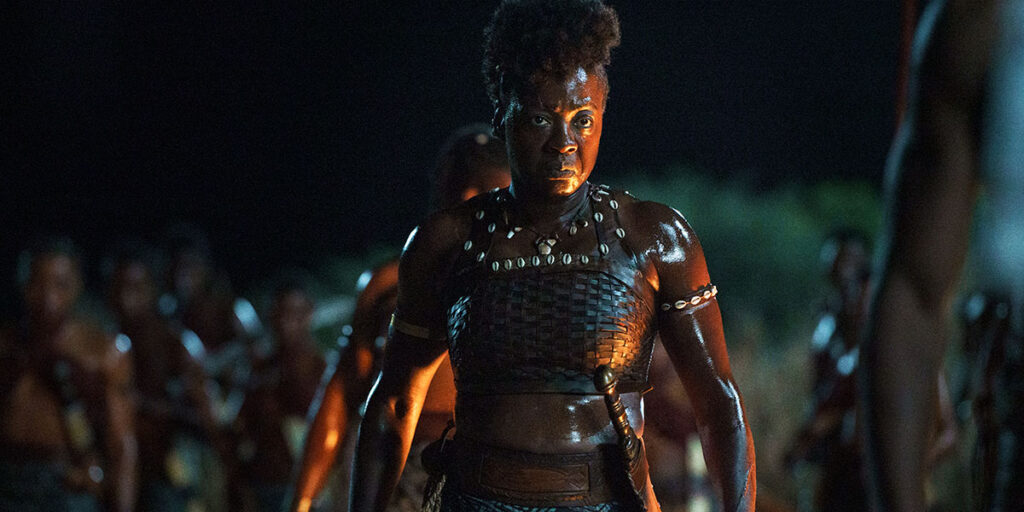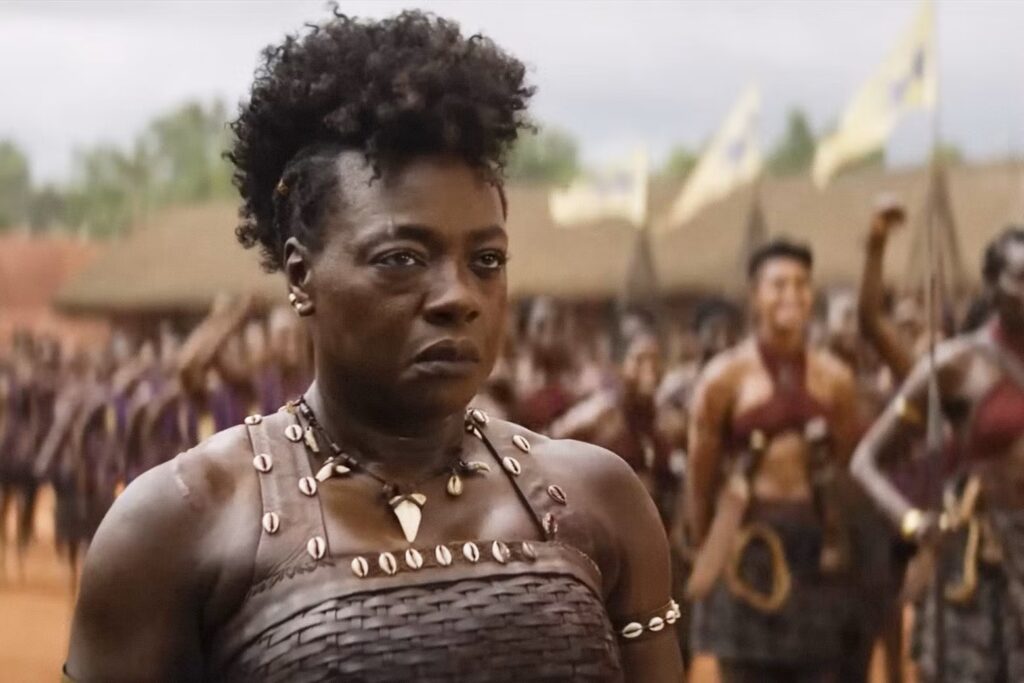“The rhetoric in Hollywood may be changing when it comes to inclusion, but the numbers are not,” according to a press release announcing the findings of a new study. The report hails from Professor Stacy L. Smith and the Annenberg Inclusion Initiative at USC’s Annenberg School for Communication and Journalism. “Inequality in 1,100 Popular Films: Examining Portrayals of Gender, Race/Ethnicity, LGBT, & Disability from 2007 to 2017” offers a comprehensive and intersectional analysis of 48,757 characters. Inclusivity has become a major talking point in Hollywood in recent years, but this study suggests that this talk hasn’t resulted in the significant, quantifiable change optimists would like to believe.
“Female speaking characters on screen filled just 30.6 percent of all roles across the 11-year time frame,” the press release details. “In the 100 top movies of 2017, 29.3 percent of characters were from underrepresented racial/ethnic groups, 2.5 percent were characters with disabilities, and less than 1 percent of all characters were from the LGBT community.”
“Those expecting a banner year for inclusion will be disappointed,” said Smith, Founding Director of the Annenberg Inclusion Initiative. “Hollywood has yet to move from talking about inclusion to meaningfully increasing on-screen representation for women, people of color, the LGBT community, or individuals with disabilities.”
In 2017, “43 films did not include a Black/African American female character, 65 were missing Asian or Asian American female characters, and 64 did not depict even one Latina character. Further, 78 films did not portray a single female character with a disability and 94 were devoid of even one female lesbian, gay, bisexual, or transgender character,” a synopsis of the study details.
Of 1,100 films, just 13 percent featured balanced casts (a story that fills 45 percent to 54.9 percent of the speaking roles with girls/women). Female speaking characters accounted for 31.8 percent of speaking characters in 2017, compared to 31.5 percent in 2016. If you’re tempted to view this as slow but steady change in the right direction, resist. In both 2008 and 2009 women represented 32.8 percent of speaking characters. The numbers are not gradually improving.

USC Annenberg Inclusion Initiative
Of the top 100 films in 2017, 33 depicted a female lead or co-lead, and of those leads and co-leads, four were from underrepresented racial/ethnic groups, and five were 45 years of age or older. In other words, when women do topline a film, they’re overwhelmingly white and under 45.
Female characters were especially underrepresented in action/adventure and animated pics. On the bright side, the percentage of female characters in comedy has increased over the past decade. In 2010 female characters represented 35.6 percent of speaking characters, whereas in 2017 they account for 42.9 percent of speaking characters in the genre.
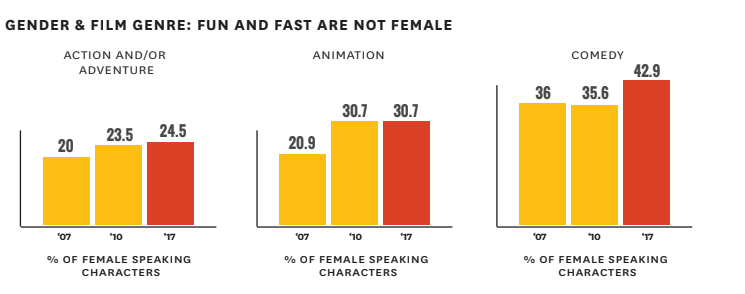
USC Annenberg Inclusion Initiative
Women remain much more likely to appear on-screen with some nudity. In 2017 25.4 percent of females were shown with some nudity compared to 9.6 percent of males, making them more than twice as likely to be depicted without clothes.

USC Annenberg Inclusion Initiative
In 2017 just 16 speaking characters were gay, nine lesbian, six bisexual, and zero transgender.

USC Annenberg Inclusion Initiative
Seventy-three percent of characters with a disability were white in 2017. 69.6 percent of characters with a disability were male, compared to 30.4 percent female.
Out of 1,100 films from 2007-2017, only 43 unique women worked as directors. Angelina Jolie, Ava DuVernay, and Sam Taylor-Johnson are among those who helmed pics. Women accounted for 53 out of 1,223 directors.
Across 1,100 films and 1,223 directors, 5.2 percent were black or African American and 3.1 percent were Asian American, and women were greatly outnumbered by men.
Of 1,1218 composers, just 16 were female.
“In prior years, I have referred to these findings as the ‘epidemic of invisibility’ in film,” Smith explained. “After witnessing little change in these numbers, it is clear that Hollywood must do more to ensure that marginalized groups are a part of the fabric of storytelling.” She added, “The lack of inclusion on screen is matched and exceeded by the exclusion behind the camera.”
Smith and Co. aren’t resigned to these stagnant figures. They offer a number of targeted solutions to increase inclusion. Smith is one of the co-creators of the inclusion rider, a term that went mainstream overnight when Frances McDormand mentioned it in her acceptance speech at this year’s Oscars. The contract clause encourages various forms diversity on-screen and behind the scenes; for example, the rider can stipulate the inclusion of women, people of color, LGBTQ people, or people with disabilities.
One of the report’s suggestions “to address the underlying reasons why progress has not occurred” is to use inclusion riders while launching new projects. Another recommendation is for companies to set target inclusion goals. “These objectives, which should be transparent and public, should specify not only a company’s expectations for inclusion but also the steps it will take to achieve the goals,” the report explains.
The report also emphasizes that while “large-scale efforts to create change are needed in film… simpler solutions are available as well.” Background roles or smaller speaking parts are primarily given to males. The study’s authors advocate for a straightforward method as a way to increase the percentage of female characters on screen — just add five. “The premise is simple: add five female speaking characters to every one of the 100 top movies next year,” the study details. “These can be small, background roles or even supporting parts. Doing so will set a new overall norm for female characters. Repeating this process for three years will result in gender parity on screen in 2020, and the first time equality would be reached in almost three-quarters of a century. Adding five female characters allows for intersectional diversity as well — these women can be from underrepresented racial/ethnic groups, can be from the LGBT community, and can be depicted with a disability.”
“Good intentions are not enough to create change,” Smith observed. “Hollywood needs tangible, actionable solutions that will usher in real transformation. Our work brings to light the steps that companies and individuals can take if they want to see results.”
Check out the complete report over at USC Annenberg’s site.
Below you’ll find more highlights from the study.
Of the top 100 films of 2017:
- Only 4 movies were driven by a woman of color. All four of these women were from mixed racial/ethnic backgrounds. This number deviates little from 2016 (3) or 2015 (3). Thirty movies featured a male 45 years of age or older at the time of theatrical release whereas only 5 films depicted a female in the same age bracket. Only one movie was led by a woman of color 45 years of age or older across the 100 top films of 2017.
- A total of 1,584 individuals worked above the line as directors, writers, and producers. 81.7% were male and 18.2% were female. Of 109 directors, only 7.3% were female. Only 10.1% of writers were female and 18.2% of producers.
- Out of 111 composers across the 100 top movies of 2017, only 1 female worked. No more than two female composers have ever been employed per year during the 11 years studied. Only 1.3% of all composers across 1,100 movies were women.
- Underrepresented characters in movies from 2017 were least likely to be shown in action/adventure films (28.1%) compared to animated (34%) and comedy (35.6%) films.
- The percentage of Black characters in 2017 films increased by 41.8 percentage points when a Black director was behind the camera then when the film did not have a Black director. Of the speaking characters in movies from 2017 with a Black director, 18.5% were Black females, compared to just 2.5% of the speaking characters in movies without a Black director.
- 4 Asian directors helmed one of the 100 most popular movies—all of these individuals were male. This translates to 3.7% of the 109 directors working in 2017. A mere 3.1% of all directors were Asian or Asian American across 1,100 films and 11 years. Asian female directors are nearly invisible in the
sample—of the three slots held by Asian women, two represent the work of Jennifer Yuh Nelson on the Kung Fu Panda films. - There has been no change over time in the depiction of LGBT characters on screen since 2014. Out of 400 popular films from 2014 to 2017, only one transgender character has appeared.
- 14 movies featured a lead or co lead character with a disability at any point in the film. The majority of films with lead or co lead characters with a disability featured males and few females. Only 1 film revolved around an underrepresented leading character with a disability and 1 a leading character from the LGBT community.
